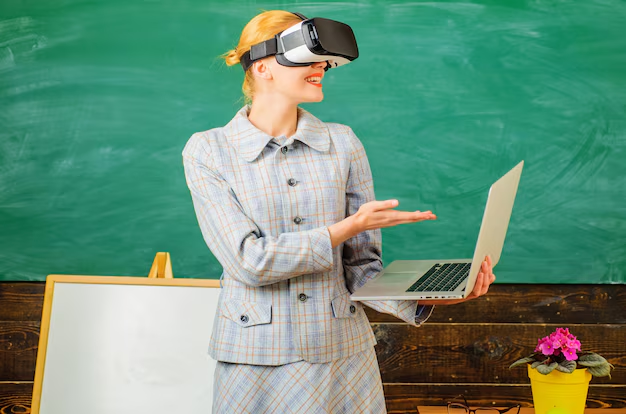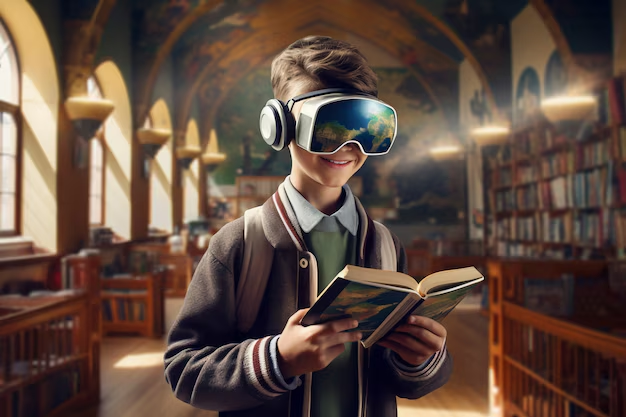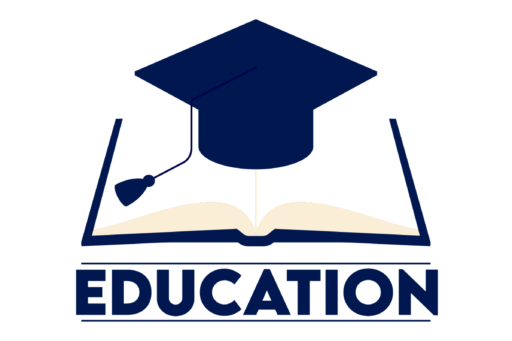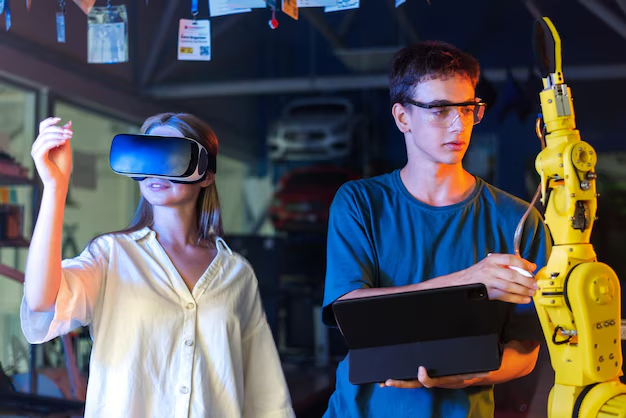The future of education is being shaped by rapid advancements in technology, which are transforming how we teach, learn, and interact in the classroom. Future Technologies Shaping Education As the digital age progresses, new tools and technologies are emerging to enhance the learning experience, providing students and educators with innovative resources that make learning more personalized, accessible, and engaging.
From artificial intelligence (AI) to virtual reality (VR) and blockchain technology, the future of education looks brighter than ever. In this blog, we’ll explore some of the key future technologies that are set to reshape the educational landscape and the ways in which students learn and educators teach.
Artificial Intelligence (AI) and Machine Learning
A. AI-Powered Personalized Learning
Artificial Intelligence (AI) is already making waves in education by helping to create more personalized learning experiences. AI-powered tools can assess each student’s individual learning style, strengths, and weaknesses and adapt lessons accordingly. By analyzing student data, AI systems can tailor content to meet the needs of every learner, providing them with resources and assignments that match their skill level and learning pace.
Examples of AI in Education:
- Personalized Learning Platforms: Platforms like DreamBox and Squirrel AI use AI to adapt lessons based on real-time student performance, providing an individualized curriculum.
- Intelligent Tutoring Systems: AI-driven tutoring systems like Carnegie Learning provide students with personalized feedback, guiding them through difficult concepts while allowing for self-paced learning.
B. AI for Administrative Efficiency
AI is also making administrative tasks easier, helping schools manage everything from attendance to grading. Chatbots and virtual assistants are becoming more common in educational institutions, answering student questions, scheduling meetings, and managing course materials.
Virtual Reality (VR) and Augmented Reality (AR)
A. Immersive Learning with VR
Virtual Reality (VR) and Augmented Reality (AR) are transforming the way students experience lessons by creating immersive, interactive environments. With VR headsets, students can experience historical events, explore outer space, or conduct scientific experiments without leaving the classroom. These immersive environments make abstract concepts more tangible and foster a deeper understanding of complex subjects.
Examples of VR in Education:
- Virtual Field Trips: Tools like Google Expeditions allow students to virtually visit distant locations such as the pyramids of Egypt, the ocean floor, or even Mars.
- Medical Training: In fields like medicine, VR is being used to simulate surgeries and procedures, providing students with a hands-on experience without the risk.
B. AR for Enhanced Learning
While VR creates fully immersive environments, AR blends digital information with the physical world. Using smartphones or AR glasses, students can interact with 3D models and visualizations, which enhances learning in subjects like biology, engineering, and art.
Examples of AR in Education:
- Interactive Textbooks: AR apps like HP Reveal allow students to scan printed pages and unlock multimedia content like videos or animations, enriching the textbook experience.
- Scientific Exploration: AR tools can help students visualize complex molecules, anatomy, and even geological formations by superimposing 3D images on real-world objects.
Blockchain Technology
Blockchain technology, best known for powering cryptocurrencies like Bitcoin, is poised to revolutionize education by offering more secure, transparent, and efficient ways of handling student records, credentials, and even payments.
A. Secure Digital Credentials
Blockchain can eliminate the risk of fraud by creating tamper-proof digital credentials. Students’ academic achievements, degrees, certifications, and diplomas can be securely stored on the blockchain, making it easy to verify their authenticity. This technology would streamline the credential verification process for employers and universities, saving time and reducing the risk of fraud.
Examples of Blockchain in Education:
- Blockchain-based Diplomas: Platforms like the University of Nicosia are already offering blockchain-based degrees, providing students with secure, verifiable credentials that can be shared with potential employers.
- Credentialing Platforms: Companies like Learning Machine are working with educational institutions to issue blockchain-backed certificates and diplomas.
B. Smart Contracts for Education
Smart contracts, which are self-executing contracts with the terms of the agreement directly written into code, could be used in education to simplify processes such as enrollment, tuition payments, and course management. For example, students could automatically receive access to course materials or have their grades updated once tuition payments are made or assignments are completed.

5G Connectivity
5G technology, the next generation of mobile internet connectivity, promises to significantly enhance the education experience by enabling faster and more reliable internet connections. This ultra-fast internet will make it easier for schools to implement data-heavy technologies such as VR, AR, and AI.
A. Benefits of 5G in Education
The advent of 5G will enable schools to provide more seamless and interactive learning experiences. With 5G, teachers and students can use high-bandwidth applications like VR field trips, live streaming of lessons, and cloud-based collaboration tools without the lag or interruptions often caused by slower internet speeds.
Examples of 5G in Education:
- Real-Time Collaboration: With the ability to connect multiple users without latency issues, 5G will enhance collaborative learning projects, enabling students from across the globe to work together in real-time.
- Interactive Content Delivery: Educational institutions can deliver rich media content, such as high-definition videos, live lectures, and interactive 3D models, more easily and with greater reliability.
Robotics and Automation
Robotics and automation are playing an increasing role in education, both in the classroom and in administrative functions. Robots are being used to assist in teaching, offer personalized learning experiences, and even perform repetitive tasks like grading and assessment.
A. Robotics for Teaching and Engagement
Robots can help engage students by providing interactive, hands-on learning experiences. They are particularly useful in teaching STEM (Science, Technology, Engineering, and Mathematics) subjects, where students can program and interact with robots to learn coding, problem-solving, and engineering concepts.
Examples of Robotics in Education:
- Coding Robots: Robots like LEGO Mindstorms or Sphero allow students to learn basic programming through play, helping them develop computational thinking skills.
- Social Robots: Some robots, like Pepper, are being used to engage students in conversation or provide personalized learning support, helping children with special needs or learning disabilities.
B. Automation in Education Administration
Automation technologies are also improving administrative tasks, such as grading, scheduling, and managing communication. Tools powered by machine learning can analyze student performance and provide instant feedback, reducing the burden on teachers and allowing them to focus more on lesson planning and student interaction.
Cloud Computing
Cloud computing has become a fundamental component of modern education, providing both students and educators with the ability to access files, documents, and resources from anywhere. Cloud-based platforms also support collaborative learning, as students can work on shared documents and projects in real-time.
A. Benefits of Cloud Computing
Cloud computing allows for more flexible learning environments, where students can access educational materials at any time and from any device with an internet connection. It also ensures that students and teachers can collaborate more easily and share resources seamlessly, whether they’re in the same classroom or across the globe.
Examples of Cloud-based Education Tools:
- Google Classroom: This cloud-based platform enables teachers to create, distribute, and grade assignments, all while facilitating communication with students.
- Dropbox and Google Drive: Cloud storage services make it easy for students and teachers to store and share documents, presentations, and projects.
Adaptive Learning Technology
Adaptive learning systems use algorithms to adjust the difficulty of lessons based on a student’s performance. These technologies offer a personalized learning experience by providing content that fits the learner’s level, making education more efficient and effective.
A. Benefits of Adaptive Learning
Adaptive learning allows students to progress at their own pace, receiving additional support when needed and challenging material when they are ready. This approach increases student engagement, improves learning outcomes, and helps reduce achievement gaps.
Examples of Adaptive Learning Systems:
- Smart Content Platforms: Platforms like Knewton and McGraw-Hill’s ALEKS use adaptive learning to create individualized learning paths for students, helping them to master concepts before moving on.
- Intelligent Tutoring Systems: AI-powered tutoring systems like Cognii provide personalized support and real-time feedback to students, enhancing their learning experience.

Conclusion
The future of education is being shaped by a host of emerging technologies, each of which has the potential to transform the learning experience for students and educators alike. From AI and VR to blockchain and 5G, these technologies are making learning more personalized, interactive, and accessible. As educational institutions continue to adopt and integrate these innovations, we can expect education to become more engaging, inclusive, and effective than ever before.
However, the integration of these technologies also requires careful planning, investment, and training to ensure they are used to their fullest potential. With the right approach, future technologies can pave the way for a more dynamic and successful education system for generations to come.

